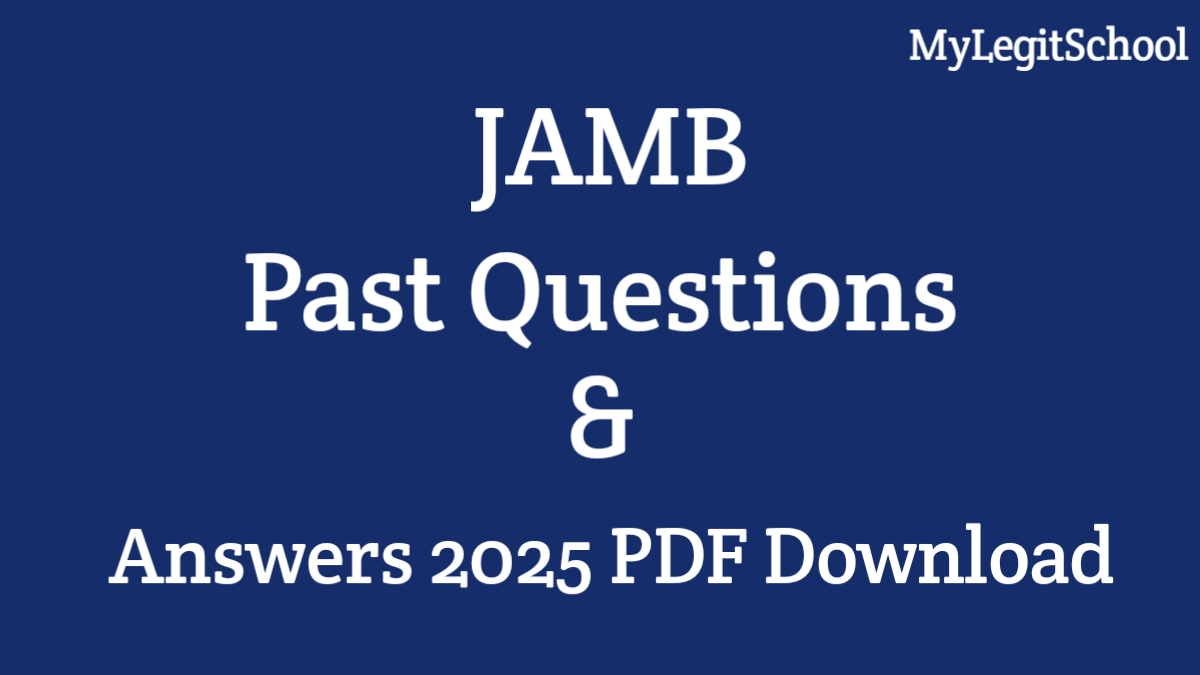JAMB 2025 Chemistry Past Questions and Answers: Are you preparing for the JAMB 2025/2026 UTME? One of the smartest ways to boost your score is by studying JAMB past questions and answers. These questions don’t just test your knowledge, they reveal the examiners’ way of setting questions, repeated topics, and give you a real feel of what to expect in the exam hall. if you want to study Medicine, Engineering, Law, or any other course, solving past questions is your secret weapon to scoring 300+
JAMB 2025 Chemistry Past Questions and Answers PDF Download
To download JAMB 2025 Chemistry Past Questions and Answers PDF Download you will have to click the link below
Why You Should Use JAMB Chemistry Past Questions and Answers
- Benefits of past questions for revision
- Using JAMB Past question will help you to Understanding JAMB question patterns
- JAMB Past Questions will Boosting confidence and earning speed
How to Use JAMB Chemistry Past Questions and Answers
- Create a study plan and make sure u follow the time table
- Make use of JAMB syllabus to Cross-check
- Practice with answers and explanations
RECOMMENDED POST
- Newly Approved JAMB Syllabus For Chemistry 2025/2026 pdf
- JAMB Recommended Textbooks for Chemistry 2025/2026 pdf free download
JAMB Past Questions and Answers Available for Download
To download JAMB past questions and answers you can click the the subject of your interests and then proceed to download;
- Use of English
- Mathematics
- Physics
- Chemistry
- Biology
- Literature in English
- Government
- Economics
- Christian Religious Knowledge (CRK)
- Islamic Religious Knowledge (IRK)
- Commerce
JAMB Chemistry Practice Questions and Answers (2025)
Below are 20 JAMB Practice Questions and Answers for the 2025 UTME Examination;
1. The atomic number of an element is the number of:
A. Neutrons in the nucleus
B. Protons in the nucleus
C. Electrons in the nucleus
D. Nucleons in the atom
✅ Answer: B. Protons in the nucleus
2. Which of the following is a noble gas?
A. Nitrogen
B. Argon
C. Oxygen
D. Hydrogen
✅ Answer: B. Argon
3. Which gas is evolved when metals react with acids?
A. Oxygen
B. Hydrogen
C. Chlorine
D. Carbon dioxide
✅ Answer: B. Hydrogen
4. Which of these is not a chemical change?
A. Burning of candle
B. Rusting of iron
C. Melting of ice
D. Cooking of food
✅ Answer: C. Melting of ice
5. The bond formed between two non-metals is:
A. Ionic
B. Electrovalent
C. Covalent
D. Metallic
✅ Answer: C. Covalent
6. The number of electrons in the outermost shell of magnesium is:
A. 1
B. 2
C. 3
D. 4
✅ Answer: B. 2
7. Which of the following is an endothermic process?
A. Condensation
B. Melting of ice
C. Freezing
D. Combustion
✅ Answer: B. Melting of ice
8. What is the pH of a neutral solution?
A. 1
B. 7
C. 10
D. 14
✅ Answer: B. 7
9. Which of the following is a strong acid?
A. H₂CO₃
B. CH₃COOH
C. HCl
D. H₂S
✅ Answer: C. HCl
10. The process of separating a liquid from a solution is known as:
A. Crystallization
B. Decantation
C. Distillation
D. Filtration
✅ Answer: C. Distillation
11. The chemical formula of calcium trioxocarbonate (IV) is:
A. CaCO₃
B. Ca(NO₃)₂
C. CaSO₄
D. CaCl₂
✅ Answer: A. CaCO₃
12. What is the oxidation number of sulfur in H₂SO₄?
A. +4
B. +6
C. -2
D. 0
✅ Answer: B. +6
13. Which of these is used as a drying agent?
A. HCl
B. H₂SO₄
C. NH₃
D. NaCl
✅ Answer: B. H₂SO₄
14. The periodic table is arranged in order of increasing:
A. Atomic size
B. Atomic mass
C. Atomic number
D. Molar mass
✅ Answer: C. Atomic number
15. An amphoteric oxide reacts with both:
A. Bases only
B. Acids only
C. Acids and bases
D. Salts
✅ Answer: C. Acids and bases
16. The apparatus used to measure temperature is the:
A. Hygrometer
B. Barometer
C. Thermometer
D. Manometer
✅ Answer: C. Thermometer
17. Which of the following is a compound?
A. Air
B. Salt
C. Iron
D. Oxygen
✅ Answer: B. Salt
18. Which method is used to separate a mixture of salt and sand?
A. Decantation
B. Chromatography
C. Filtration
D. Sublimation
✅ Answer: C. Filtration
19. The valency of nitrogen in NH₃ is:
A. 1
B. 2
C. 3
D. 4
✅ Answer: C. 3
20. Which of the following compounds has a giant covalent structure?
A. H₂O
B. CO₂
C. Diamond
D. CH₄
✅ Answer: C. Diamond
Conclusion
We have gotten to the End of this post, Don’t leave your JAMB success to chance practice smart with past questions and answers! Every top scorer you’ve heard about didn’t just read hard; they studied right. Download the free JAMB past questions now and start practicing like a pro. Your dream score is one step closer

